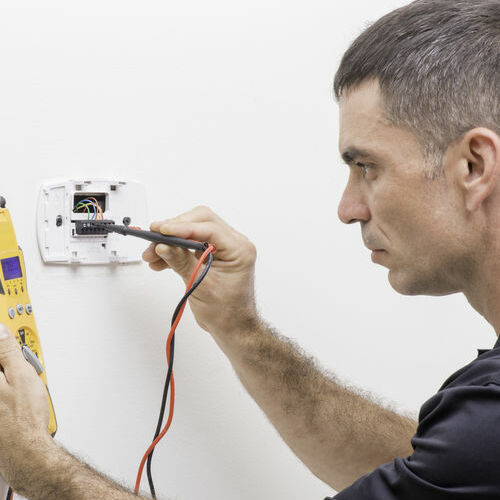
What is HVAC thermostat
If you are having trouble keeping your home warm or cool, though your heating and cooling system seems to work fine otherwise, you may have a problem with your HVAC thermostat. You may ask, “What is HVAC thermostat?” Your thermostat serves as the control center for your HVAC system. It’s one of the most essential components of the system. It regulates the temperature, alerting the system to the temperature inside the room so the system can adjust and provide adequate heating and cooling depending on the setting. When the thermostat malfunctions, it can cause all sorts of problems with your heating and cooling system. Problems can range from the system running constantly to not running at all.
If you are having problems keeping the temperature adjusted or your system has stopped working, your thermostat may need to be repaired or replaced. For exceptional HVAC thermostat services in Orange, CA, rely on the team at Elite HVAC. Schedule an appointment with us by calling (714) 464-6622.
While your thermostat helps keep your home cool in the summer, there’s nothing like a cold glass of water to keep you cool, refreshed and healthy. To ensure you always have fresh, clean water to drink, you may want to consider installing a carbon filtration system for your home.
How do you know if a house thermostat is bad?
A problem with your HVAC thermostat could affect your whole system. Below are some ways you can tell your HVAC thermostat is bad.
- HVAC thermostat not working: If your home temperature doesn’t change or the display is unresponsive or not lit usually means the thermostat is broken or needs batteries.
- The heater or air conditioner will not turn on. A wiring defect may be preventing electric signals getting sent to the system, and shutting it down.
- The heater or air conditioner will run constantly and not turn off. The thermostat could be miscalibrated or have faulty wiring. Faulty wiring is often a cause of thermostat issues. Usually this is because the wiring, and even the thermostat, are aging.
- The setting on your thermostat and the room’s temperature aren’t matching. This may be normal if the system is set up for zoning, which regulates temperatures in different parts of the house. If the system is not set up this way, it may be faulty.
When should I replace my home thermostat?
Your home thermostat will generally last about 10 years or so before it needs to be replaced, which is also about the average lifespan of an HVAC system. If it at all possible, it’s best to replace the thermostat when you replace the HVAC system itself. You may also want to consider upgrading your HVAC thermostat to a programmable or smart thermostat, especially if you still have a manual thermostat. Programmable and smart thermostats can lower your bills and even extend the life of your heating and cooling system because they lower the system’s workload. Replacing older thermostats will also ensure your HVAC system runs smoothly no matter the time of year.
How much does it cost to replace HVAC thermostat?
Depending on the type of HVAC thermostat you get, the average cost to install or replace it ranges from about $111 to $250. The price includes the cost of the unit as well as installation. The thermostat itself can cost anywhere between $15 for a manual thermostat and $300 for a smart thermostat. Standard programmable units cost between $20 and $150.
What is the best HVAC thermostat?
What kind of thermostat you buy will depend on your needs and your budget. One of the best smart HVAC thermostats is the third generation Nest Learning thermostat. If you are on a tight budget but want to get a programmable thermostat, a good option is the Lux Products TX 500U Universal 5-2 programmable. For non programmable electric thermostats, one of the best is the Honeywell TH3110D1008 model.
HVAC thermostat with humidity control
Most current programmable and smart HVAC thermostats will have humidity control. Humidity control is essential to help prevent mold growth, especially inside air ducts. Ideally relative humidity inside the home should be at 50% or lower, and at most 60%. Leaving the thermostat on constantly puts a strain on the evaporator coils, which help manage humidity. For HVAC thermostats with built-in humidity control you can adjust the humidity level manually. For other thermostats you can adjust the temperature settings to manage humidity, especially during the summer. The ideal setting is between 78 and 80 degrees. Setting the thermostat on “Auto” will also help reduce the relative humidity. On this setting, the evaporator coils are allowed to cool correctly without putting too much strain on them.

Call today
When your thermostat is malfunctioning, it affects the whole system. If you have a faulty HVAC thermostat in Orange, CA, give Elite HVAC a call at (714) 464-6622 for the most reliable service available.
